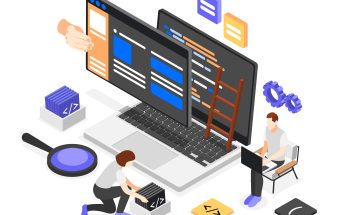Competitive pricing software enables businesses to set optimal prices by analyzing market trends, competitor strategies, and customer demand, offering tools like Pricefx, Prisync, and Competera to stay agile in dynamic markets. In 2025, with e-commerce and publishing industries facing fierce competition, these solutions help businesses maximize profits and maintain relevance. However, implementation challenges, data accuracy, and integration complexities require strategic approaches to unlock their full potential, ensuring pricing strategies align with market realities.
Table of Contents
The Rise of Competitive Pricing Tools
The digital economy has intensified price competition, with consumers comparing options across platforms like Amazon in seconds. Competitive pricing software emerged to address this, providing real-time insights into competitor prices, demand fluctuations, and market trends. By 2025, the pricing software market is projected to reach $2 billion, growing 12% annually, driven by the need for data-driven pricing in industries like retail and publishing.
This focus on strategic pricing aligns with the user’s interest in polished product presentations, as seen in their appreciation for compelling showcases. In publishing, for instance, software helps authors price self-published books competitively on Amazon, ensuring they attract readers without sacrificing margins. By automating price analysis, these tools empower businesses to make informed decisions, staying ahead in fast-moving markets.
How Competitive Pricing Software Works
The process begins with data collection, where software aggregates competitor prices, often scraping e-commerce platforms or using APIs to access real-time data. Machine learning algorithms analyze patterns, identifying trends like seasonal discounts or competitor promotions. For a self-published author, this might involve tracking similar books’ prices on Amazon to set a competitive rate, as seen with tools like Prisync.
Dashboards visualize insights, showing price histories and market positioning, enabling businesses to adjust prices dynamically. Integration with platforms like Shopify or Magento ensures seamless updates to online stores. Automation features, such as dynamic pricing rules, adjust prices based on predefined criteria, like matching a competitor’s discount. This streamlined approach ensures pricing aligns with market dynamics while maintaining profitability.
Benefits of Competitive Pricing Software
Competitive pricing software delivers significant advantages. Real-time insights enable businesses to respond to market shifts, boosting sales by 5-10%, as per industry studies. Profit optimization balances competitive prices with margins, critical for authors pricing books on KDP. Automation reduces manual effort, saving hours weekly on price monitoring.
Enhanced customer trust comes from consistent, market-aligned pricing, resonating with the user’s interest in professional outputs. Integration with e-commerce platforms ensures scalability, supporting businesses as they expand. These benefits make competitive pricing software a strategic tool for staying relevant in industries where price sensitivity drives purchasing decisions.
Challenges and Solutions
Data accuracy is a challenge, as incomplete or outdated data can skew pricing decisions, mitigated by using reliable platforms like Competera with robust data sources. Integration complexities, particularly with legacy systems, are addressed through API-driven solutions or middleware. High costs, often $1,000-$10,000 annually, are managed by selecting scalable tools with tiered pricing.
Over-reliance on automation risks disconnecting from customer needs, countered by combining software insights with human judgment. Regulatory compliance, like avoiding price-fixing, is ensured by adhering to legal guidelines. These solutions ensure competitive pricing software delivers value without compromising strategy or compliance.
Future Trends in Competitive Pricing Software
AI will enhance competitive pricing software, predicting consumer behavior and optimizing prices with greater precision. Blockchain could ensure transparent price tracking, reducing disputes. Integration with AR will allow customers to visualize price-value propositions, aligning with the user’s interest in immersive experiences. Real-time global data aggregation will target emerging markets, making pricing tools more inclusive. These trends will elevate the software’s role in dynamic pricing strategies.
Real-World Impact
A self-published author used Pricefx to adjust book prices on Amazon, increasing sales by 15% by aligning with competitors. An e-commerce retailer implemented Prisync, boosting margins by 8% through dynamic pricing. These examples highlight competitive pricing software’s ability to drive sales and profitability, empowering businesses to thrive in competitive markets.
Conclusion: Staying Ahead with Smart Pricing
Competitive pricing software empowers businesses to set optimal prices, leveraging real-time insights to stay agile. While data and integration challenges require careful navigation, the benefits of automation and market alignment make it a valuable investment. As technology advances, these tools will continue to redefine pricing strategies, ensuring businesses remain competitive in dynamic markets.




